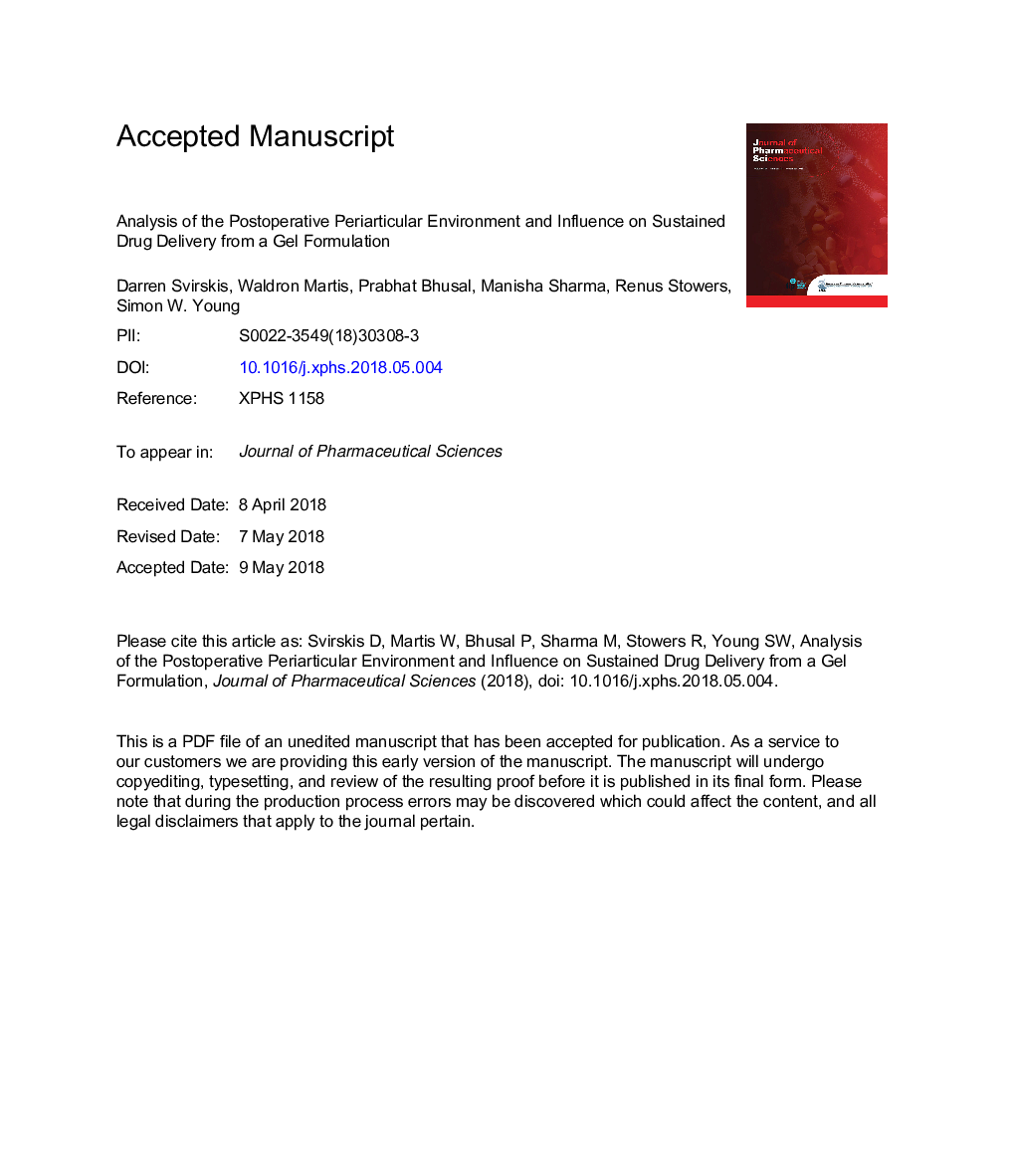| Article ID | Journal | Published Year | Pages | File Type |
|---|---|---|---|---|
| 8513068 | Journal of Pharmaceutical Sciences | 2018 | 17 Pages |
Abstract
Regional intraarticular delivery of local anesthetics is effective in treating postoperative pain following total knee or hip replacement. Recent research efforts have been only partially successful in achieving sustained release of the analgesic agent, in part due to limited understanding of the biological environment into which these formulations are administered. This study aimed to detail the composition and properties of postoperative periarticular fluid (PO-PAF). PO-PAF was collected from 8 patients, and the composition and physicochemical properties were determined. A number of components were identified which are lacking from phosphate buffered saline (PBS) or other synthetic media. The differences in composition led to variation in the physicochemical properties of PO-PAF compared with PBS. Notably, significantly lower surface tension (p <0.05) and higher buffer capacity (p <0.05) were observed in the biological fluid. We demonstrated that the solubility of lidocaine is almost double in PO-PAF compared to PBS (p <0.05) and that lidocaine release from a poloxamer gelling system occurred faster into PO-PAF under both sink and nonsink conditions. Collectively, these data indicate PBS is inappropriate for the in vitro evaluation of intraarticular drug delivery systems. The presented data describe that PO-PAF and will support the future development of biorelevant media to ultimately improve in vivo-in vitro correlation.
Related Topics
Health Sciences
Pharmacology, Toxicology and Pharmaceutical Science
Drug Discovery
Authors
Darren Svirskis, Waldron Martis, Prabhat Bhusal, Manisha Sharma, Renus Stowers, Simon W. Young,
